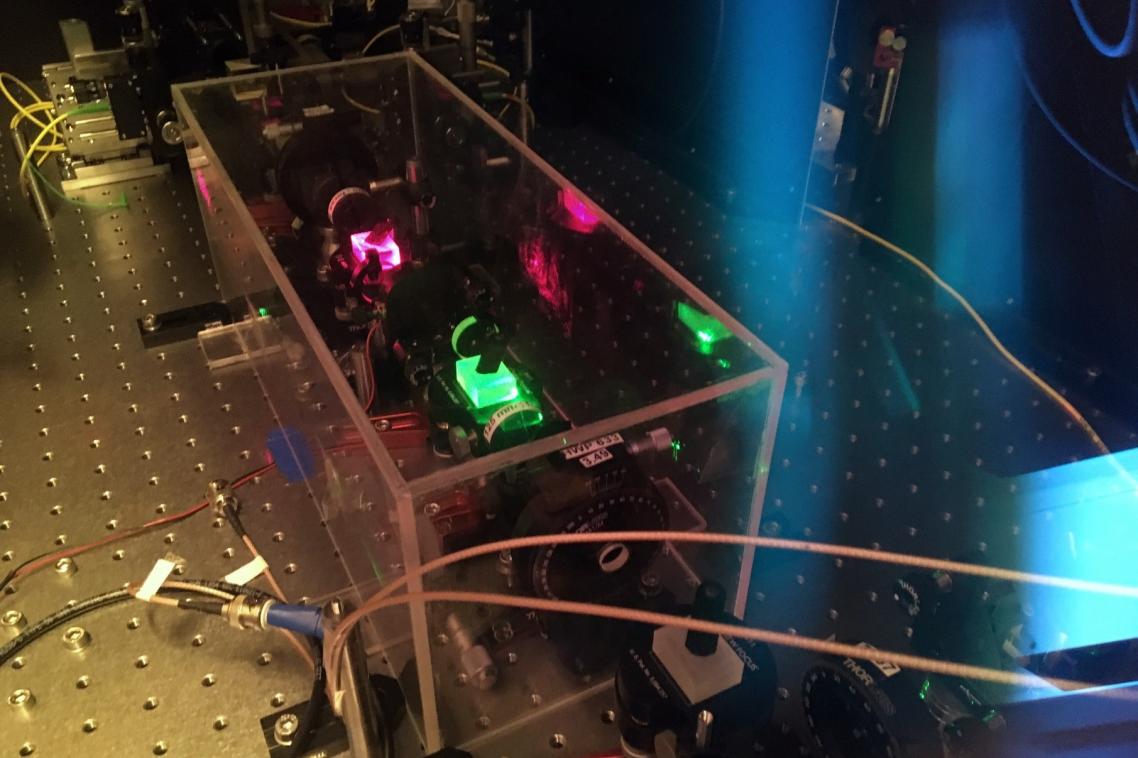Pickin’ up good quantum vibrations

A new technique that can generate quantum behaviour in a millimetre-sized drum has been developed by researchers from The University of Queensland and the Imperial College London.
UQ’s Dr Martin Ringbauer of the ARC Centre of Excellence for Engineered Quantum Systems said the new method for beating the tiny drum would help the march towards new quantum technologies.
“Generating quantum states of motion will be crucial for developing technology such as ultra-sensitive vibration sensors and transducers, like those that tell your phone which direction you’re holding it,” Dr Ringbauer said.
“Hitting a drum with a drumstick causes it to rapidly move up and down and produce the sound we hear, however in the quantum world a drum can be in a superposition state where it vibrates and stands still at the same time.
“In recent years, the emerging field of quantum optomechanics has made great progress towards the goal of a simultaneously vibrating and non-vibrating miniature-sized quantum drum.”
A light particle is created to take two possible paths at the same time, with one path hitting the drum, and the other not – meaning the drum does and does not start to move.
UQ researcher Dr Till Weinhold said the research team took an unconventional approach to this principle.
“We adapted a trick from quantum computing to help us select cases where our drumstick – a single particle of light – interacted with the tiny drum,” Dr Weinhold said.
“The technique had not been trialled in combination with a mechanical resonator before now.
“Our success will enable other researchers to reach a true quantum superposition and ultimately enhance the sensitivity of sensors for vibrations and movements of objects.”
These future experiments could reveal new intricacies of quantum mechanics and might even help light the path to a theory of quantum gravity.
The paper is published in the New Journal of Physics (DOI: 10.1088/1367-2630/aabb8d).
MEDIA: Dr Till Weinhold, t.weinhold@uq.edu.au, 0423 135 456
Topics
Related articles

Should you consent to your doctor using an AI scribe? Here’s what you should know.

Thousands of Queensland reef photos lead to worldwide change
Media contact
UQ Communications
communications@uq.edu.au
+61 429 056 139
